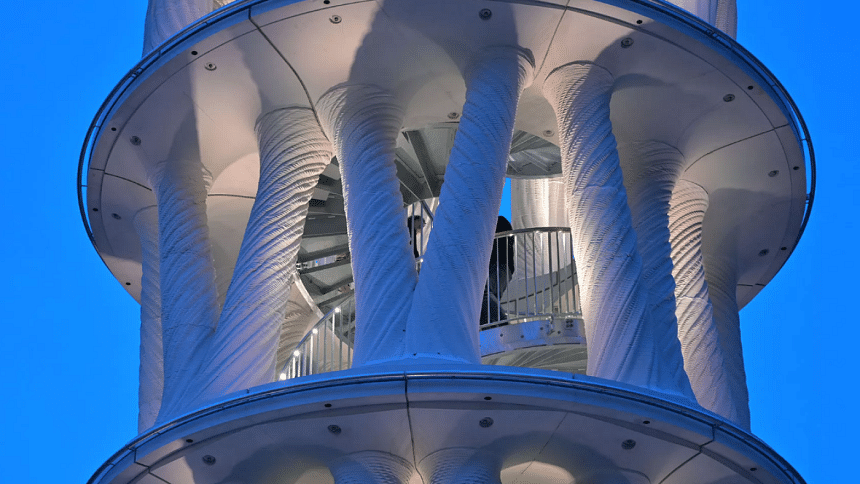This 30-metre 3D-printed tower aims to revive a dying community

In the quiet alpine village of Mulegns, Switzerland, a striking new landmark now pierces the sky, not just as an architectural marvel, but as a lifeline for a fading community. Standing at 30 metres tall, 'Tor Alva' ('The White Tower') is the world's tallest 3D-printed building, a delicate yet daring structure designed to lure visitors, spark investment, and perhaps even reverse the village's decades-long decline.
Once a thriving stop along the historic Julier Pass, Mulegns has seen its population dwindle from 140 in 1900 to just 12 residents in recent tims. The tower, unveiled in May, is part of a bold plan to revive the village by blending cutting-edge technology with cultural heritage.

Designed by ETH Zurich architects in collaboration with the Origen Cultural Foundation, the structure's 32 intricate, branching columns, each robotically printed from a fast-setting concrete blend, evoke the craftsmanship of Baroque master builders and the region's famed pastry chefs, whose wealth once sustained the area.

But this is no mere monument. Inside the tower, a 32-seat cupola theatre offers sweeping alpine views, with performances set to begin in July. Guided tours are already drawing curious visitors, fulfilling one of the project's key goals: sustainable tourism. "It inspires the building sector, encourages sustainable tourism, and offers new cultural space," said Giovanni Netzer, founder of the Origen Cultural Foundation, calling the tower "a technical triumph", in the ETH Zurich press release.

The tower's construction pushes the boundaries of digital fabrication, using thin-walled, material-efficient 3D-printed concrete, a breakthrough that could reshape sustainable architecture. Yet its true impact may be social. By 2030, the tower will be dismantled and relocated, but local leaders hope its legacy will endure, attracting new residents and reversing Mulegns' decline.
For now, Tor Alva stands as a beacon: of innovation, of revival, and of the fragile hope that even the smallest communities can find a future in the fusion of art and science.


 For all latest news, follow The Daily Star's Google News channel.
For all latest news, follow The Daily Star's Google News channel. 



Comments